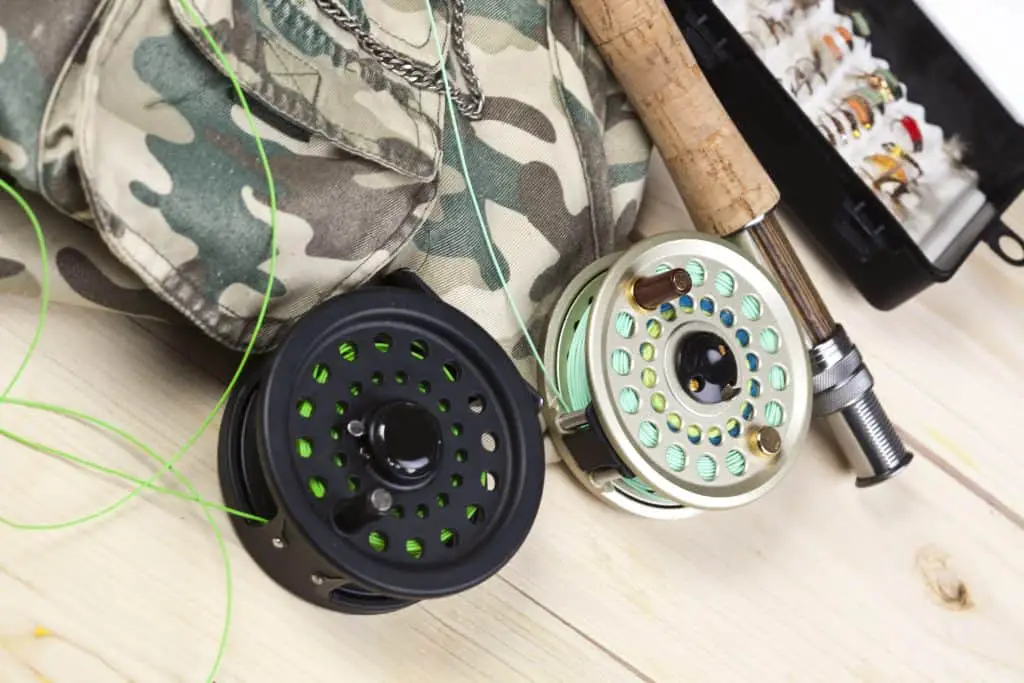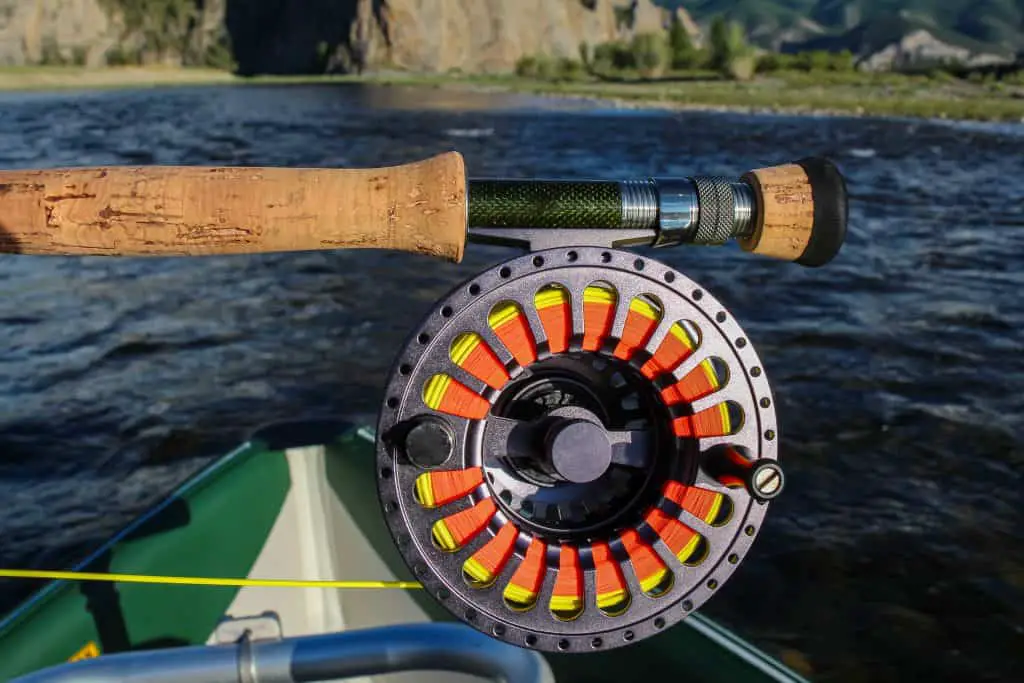Mooching reels have their roots in the Western Canadian and Northern California coastlines. Fly fishing on the other hand has its origin in England dating back to the 13th century. Fly fishing has gained popularity since then and now cuts across all ages and genders. Mooching isn’t as prevalent but those that indulge in it are quite a handful.
Gear and equipment of both fishing techniques are easy to differentiate from the outward appearance to their functions. The Mooching Reel vs. Fly Reel debate isn’t as heated as the Fly Reel vs. Spinning Reel one but there are still some new anglers who need a piece that differentiates the two properly.
It is hectic as there is very minimal and scanty information on this topic. We have put together an article that differentiates the fly reel from the mooching reel to allow you to choose a fishing technique that suits you, your location, and your fishing skills.

What is a Mooching Reel?
First, a mooching reel has been built to be used with a mooching rod. It is an open water fishing technique that fishermen use the light terminal gear and light lines rigged with anchovy or cut bait herrings trolled or jigged to catch Coho salmon and chinook. These reels have large arbors, are direct drive, and are designed to battle salmon on bigger rivers and the ocean. However, some like the Shimano Moocher Plus GT Reel can be used for drift fishing or mooching walleye and trout apart from salmon.
From afar, they look like bigger fly reels or advanced centerpin reels. However, mooching reels are built with spools of large capacities to hold lead, braid, or monofilament core lines to ace this technique. They come with a retrieve ratio of 1:1 but the larger spool and frame allow the mooching reel to take in the fishing line faster with every rotation. This makes it easier for a fisherman to reel in their catch.
Pro moochers call these single-action reels the knucklebusters because of the unique yet deep connection that these large reels have and their hard fish fighting capabilities compared to fly reels and other conventional reels. Some manufacturers of mooching reels include Abu Garcia, Shimano, Abel Reels, Islander, and Amundson among others.
What is a Fly Reel
Fly reels are the commonest type of reels in the fishing sector. They are single-action as one revolution of their handle returns a single spool revolution. Some brands produced multiplier or multi-action fly reels and marketed them for several years. But they have been on and off the market. However, the most efficient models remain the single-action fly reels.
Single action fly reels give the fisherman/woman an intimate experience by putting them in touch with the fish. Modern fly reels of today boast five primary elements-an outer frame for higher durability, an arbor to store the line, dispense, and retrieve it, a reel foot for better and quicker attachments to the rod, an inner drag system to maintain an optimum fish battling pressure when the chap decides to bolt, and a handle to make the reel system move.
Mooching Reel vs Fly Reel – What are the Differences
Fly fishing and mooching are two entirely different fishing styles but their reels are almost similar. Mooching reels are however the simplest designs in the market.
Arbor Size:
The reel arbor is responsible for improving the retrieve rate, counter instances of line memory, and make the drag tension difference reasonable as you reel in a fish. For fly fishing, you can get a reel with a small, medium, large, or super large arbor size. The bigger the arbor size, the better its arbor functions. The arbor sizes vary depending on the target species.
Mooching reels are built with large arbors to make them effective for large fish that love to stake battles when being hooked.
Action:
While most fly reels are single-actioned, some are multipliers or multiple-actioned. Mooching reels however maintain being single-actioned.
Handles:
Your typical fly reel is built with one handle to move the reel system round. Mooching reels have two handles to get rid of any vibrations when the fish gets on a long and high-speed run. Their handles are also larger for greater balance as you let out the line.
Weight:
Mooching reels are beefier and heavier because they have to hold more feet of the line under tension. Fly reels on the other hand come in lighter versions and their backing capacities are lower than that of mooching reels. Weight is a crucial aspect when fly casting the heavier the reel, the more effort you have to put in.
Fishing Action:
Fly reels are designed to be fly cast while mooching reels are built to drop the fishing line off the kayak and allow the currents to troll it or carry it downstream.
Drag:
The majority of mooching reels are built with a high-quality disc drag system to offer more fish-stopping power and counter any startup inertia. Because of their areas of use, they come completely sealed for higher efficiency and low maintenance.
If you have fished salmon, you know that these guys can stage battles that are difficult to be won by a fisherman. With a powerful drag, it makes the task less stressful. Fly reels have various drag systems depending on the brand. They range from disc drag to click and pawl systems and those that can handle saltwater fishing aren’t as powerful as mooching reels.
NOTE: We won’t necessarily limit mooching reels to oceans and saltwater environs because of their structure and purpose since some manufacturers like Shimano are building more technologically advanced mooching reels that can work well on big rivers and great lakes.

Conclusion
Since mooching and fly reels look almost similar, it is easy for a novice to get confused when shopping for a reel for their needs.
Understanding the differences between the two is crucial to allow you to choose one that matches your fishing location, technique, and needs. Both work effectively in their designated areas of use and investing in a good one will give you an intimate fishing experience.